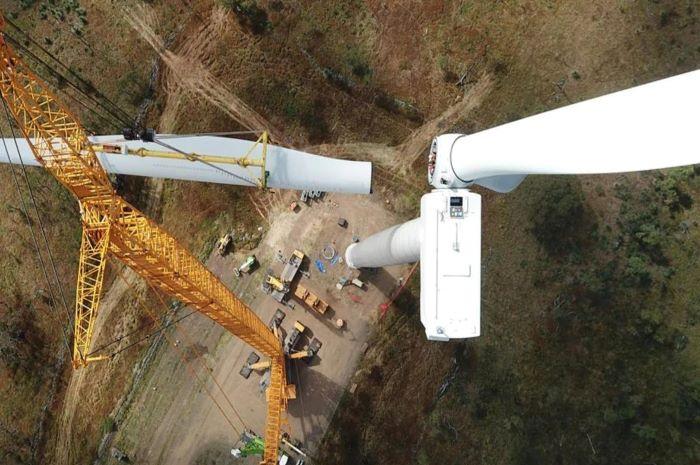Subsidies to the renewable sector have dropped by nearly 45% since they peaked in 2017 and the government needs to revive them urgently, a recent study stated.
The study by the International Institute for Sustainable Development (IISD) and the Council on Energy, Environment and Water (CEEW) found that subsidies to renewable energy fell from Rs154 billion (Rs15,470 crore) in (FY) 2017 to Rs85.77 billion (Rs8,577 crore) in (FY) 2020, reported Mongabay.
The research revealed that the subsidy increased for the oil and gas sector. Analysts explained that the renewable energy subsidies have stagnated due to a combination of factors, including grid-scale solar and wind achieving market parity, lower deployment levels, and subsidy schemes nearing the end of their allocation period.
Meanwhile, state-run Gujarat Urja Vikas Nigam Limited (GUVNL) withdrew subsidies to small-scale distributed solar projects, affecting around 4,000 projects with an aggregate capacity of around 2,500 MW signed power.
SECI to set up 2,000 MWh standalone energy storage project
The state-run Solar Energy Corporation of India (SECI) is planning to set up a 2,000 MWh standalone energy storage system, which will be run by the private sector. The projects will be set up on a build-own-operate (BOO) basis with a 25-year agreement. India announced renewable energy targets of 175 GW by 2022, 275 GW by 2027, and 450 GW by 2030. Experts said the capacity value of these variable renewable energy sources is limited without grid-scale energy storage.
Experts estimated the cost for storage at $203/kWh in 2020, which they expect to come down to $134/kWh in 2025.
Indian Oil to build India’s first green hydrogen plant at Mathura refinery
The state-owned Indian Oil Corporation Limited said it will build India’s first ‘Green Hydrogen’ plant at its Mathura refinery. The Indian Oil chairman said the company will use power from its wind power project in Rajasthan, to produce green hydrogen through electrolysis.
The company said Mathura has been selected because of its proximity to Taj Mahal. The green hydrogen will replace carbon-emitting fuels used in the refinery to process crude oil into petrol and diesel. Mercom reported that the company wants to sensitise people about protecting the monument from pollution. The firm will likely utilise green power from the grid to power the project, thereby decarbonising some parts of the manufacturing.
Manufacturers of off-grid solar products warn of 12-18 months disruption
A survey of over 30 manufacturers of off-grid solar products such as solar TVs, fridges, water pumps and lanterns warned that the disruption caused by material shortages and raised shipping costs could continue throughout next year. The survey was conducted by Netherlands-based off-grid solar body GOGLA.
Manufacturers were mostly troubled by the global shortage of chipsets and controllers–which feature in inverters. The respondents to the GOGLA survey also mentioned rising prices of polysilicon affecting solar panel production costs and rising copper prices driving up the cost of cabling, PV magazine reported.
Uttarakhand to make solar panels mandatory for homes
Uttarakhand is set to make it mandatory for residents to produce their solar power and rainwater harvesting plans while seeking clearance for their house maps. Impacts of climate change and depleting water levels have pushed the state to introduce the norms, ET reported.
While the state generates power from solar, hydro and thermal sources, it continues to buy electricity from other states. The state’s environment directorate wants to end this dependence. Uttarakhand has 295 MW installed capacity of domestic solar power plants, which includes both domestic as well as ground mounted solar plants.
India’s share of renewable power capacity, including large hydel projects, rises to 39%
The Centre told Parliament that India’s renewable energy capacity, including under installation projects, stood at almost 97 GW (gigawatts) as of June 30. This does not include large hydel projects, which are also categorised as renewable. According to a report by ET, as on June 30, the total non-fossil fuel based generation capacity stood at 150 GW, which is 39% of the total installed capacity. This will help the country surpass its nationally determined contribution (NDC), according to which 40% of India’s generation capacity was to be non-fossil fuel based by 2030, the newspaper reported.
About The Author
You may also like
Renewables are Cutting Down Power Prices Globally: Report
India’s PLI Drives Growth in Solar Manufacturing Sector: Report
BlackRock plans to invest ₹3,000 crore in Aditya Birla Renewables
In 2025, costs of storing renewables with batteries have fallen to its lowest ever: Report
Renewables providing one-fifth of electricity in 20 countries: Report

